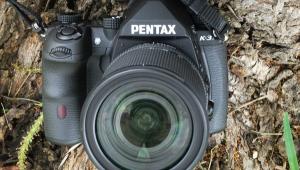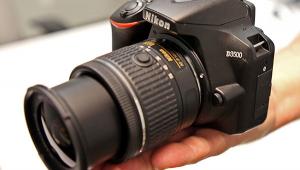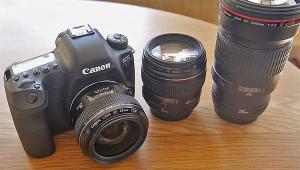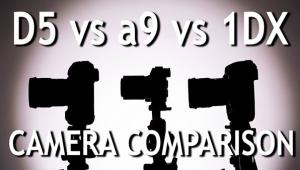Canon Rebel T6s/T6i DSLR Camera Review
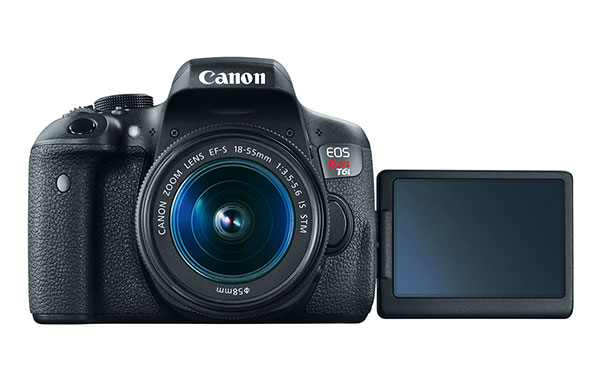

[Editor's Note: Lab test and comments are by Betternet, Shutterbug’s TIPA-affiliated testing lab. TIPA (www.tipa.com) is a worldwide association of photo and imaging magazine editors. Shutterbug is the sole US member of the association, and Editor at Large George Schaub serves as a member of the Technical Committee. Please click on the Image Tech tab on the home page for more camera review tests.]
The Canon Rebel T6s and T6i are based on the same camera design: Both use an APS-C sized sensor (Canon's “APS-C” with 22.9 x 14.9 mm) with a resolution of 24MP. They also use the same image processor, the DIGIC 6. However, there are some design differences. While the TS6i looks like a little modified version of its forerunner T5i, the design of the T6s is more reminiscent of the mid-range SLR system EOS 70D. The illustrations provided show the differences in design and setup between the two models.
The T6s has a mode dial located on the left hand side of the top with a status LCD on the right hand side. The status LCD is a lot smaller than that of the 70D, plus has less function buttons on the top. Yet, the concept is nearly the same as for the 70D: both camera bodies have nearly the same size and weight.

The T6s uses a different control field system than the T6i. The T6i has a standard 4-way cursor field while the T6s uses a combination of control field and parameter dial on the back. In combination with the second dial on the top (near the shutter release button), the photographer can change aperture and shutter speed simultaneously, while the T6i user has to switch between both parameters with the help of the “+/-” button on the back.
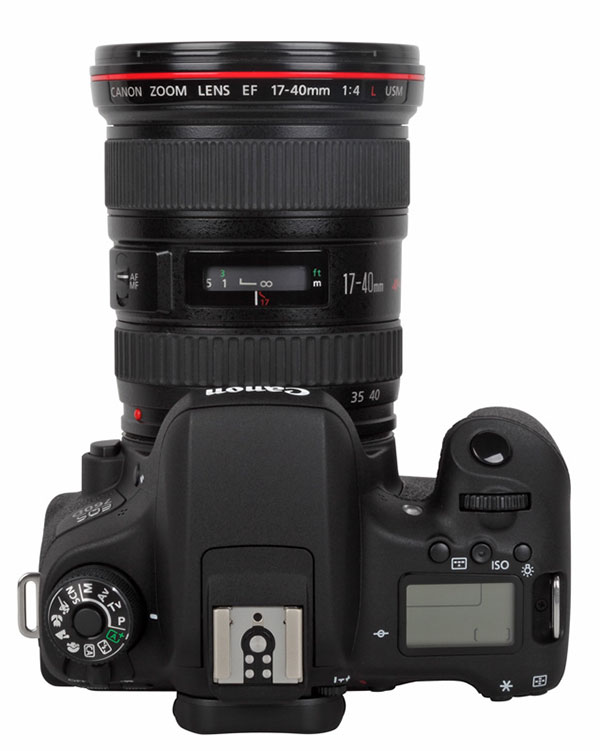
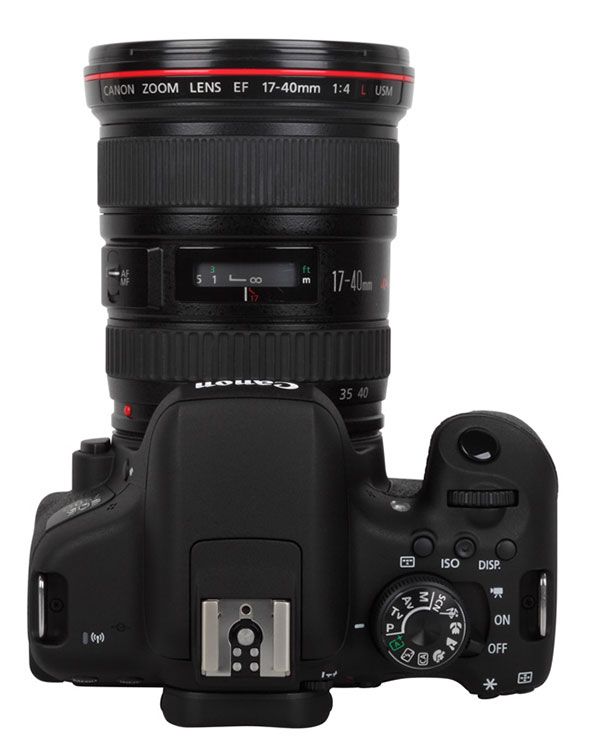
Just like nearly all entry-level SLR systems, both cameras show only 95 percent of the image taken by the sensor, which we find bothersome for image composition. The user can see a 100 percent field of view by using the LCD screen.
The two new Canons have a new AF system; their 19 AF sensors offer somewhat more AF areas than most other entry-level DSLR cameras. More importantly, all AF sensors are cross type sensors. During our tests the AF system showed a very good performance. It was very fast and didn't show erratic behavior: in all it provides a consistent and reliable focusing performance.


The AF system enhances the continuous shot mode of the cameras. The T6s can take up to five images per second. (Note: In Raw mode the cameras handle only 8 frames per burst mode sequence, which is a below average performance.) When using JPEG image format it is able to shoot up to 940 frames per continuous shooting sequence. In our tests we did shoots with up to 500 frames and stopped shooting: at that point there was absolutely no sign of getting slower shooting rates.
While the burst mode showed an appealing performance, the fastest shutter speed is only 1/4000 second, which we think is insufficient for taking very active sport photos. (Most mid-range SLRs offer 1/6000 to 1/8000 second; some CSC cameras offer up to 1/16000 second by using an electronic shutter system. The two Rebels use a combination of mechanical and electronic shutter systems.)
The swivel LCD of both cameras is fully articulated. Due to its pivot joint on the left hand side, it can be flipped up- and downwards, to the side and to the front. For transport of the cameras the glass front of the LCD screen can be rotated to the body of the camera, which will protect the screen against dust and scratches. The LCD screen has an image diameter of 3 inches and a resolution of 1,040,000 RGB dots, which is the current standard even for the entry-level segment. The LCD screen is touch sensitive and allows the user to change image parameters in the menu or set up the desired focus point with a fingertip.

Both cameras are equipped with a WLAN system. Canon offers a free control app for Android and Apple iOS mobile phones or tablet computers that allows the use of mobile devices as remote control (including live preview on the LCD screen of the phone/tablet PC). The Wi-Fi system of both cameras is also able to allow the user to print images on WLAN printers, to send images from one camera to another, and to present images/videos on DLNA systems like Smart TVs. It also supports the NFC standard, so it is very easy to establish a connection between the cameras and smart phones.
Comments on Image Quality
Color: The automatic white balance system of the T6s caused a slight shift into the yellowish and greenish area of the color space, which translated into a very minor shift in our portrait shot and the test box shot. Saturation is a little high for an SLR camera, but we believe this color level meets the “color anticipation or expectation” of most users. As usual for Canon cameras, the red nuances have a slightly high yellow rate, but the effect is still on an acceptable level. Skin tones are reproduced nearly perfectly.
The color results of the T6i are identically to the results of the T6s: the white balance system of the camera showed the same behavior and the mean saturation is exactly the same at 108 percent.

Sharpness: The T6s reproduced the ISO 12233 test chart with 3811 lines per picture height (4000 lines nominal sensor resolution), which is a very good result. The T6i showed nearly the same performance and reproduced the chart with 3763 lines per picture height. The very good sharpness is noticeable in our test shots. The fine structures and marks of the ruler in the center of the test box shot show clear and crisp image details. The fine details in the eyelashes of our model are also reproduced very well.
NOTE: All technical tests images including the ISO 12233 chart and TIPA test images were shot with the Canon EF 50mm f/1.2L USM lens. The product images supplied with this test show the cameras with a Canon EF 17-40mm f/4L USM lens.

Note: We did find that the 50mm test lens caused some chromatic aberration effects, especially in the image corners. The cameras couldn't compensate for the lens errors because the 50mm isn't supported by the image processor. Any lens errors taken with the kit EF-S 18-135mm f/3.5-5.6 IS STM lens, however, are directly compensated for by the DIGIC 6 processor.
Noise: The Rebel T6s showed a very good performance in the noise tests. Up to ISO 400, the luminance noise stays well below the 1.0 percent line. This line isn't crossed until ISO 6400, which is a remarkable result. Color noise is very low and first becomes visible at ISO 3200. The cameras use an intelligent anti-noise filtering system which causes only minor smoothing effects, so even images taken with ISO 6400 to ISO 12,800 look great and don't show exaggerated filtering effects.
The dynamic range results are also very good. The cameras achieved a maximum of 11.5 f-stops and keep a high level of more than 10 f-stops up to ISO 1600. The dynamic range drops drastically down to 7.66 f-stops at ISO 12,800. Results of the T6s are nearly identically to the results of the T6i.
Pro:
+ APS-C SLR with good image results
+ good AF performance due to new AF system with 19 cross-type sensors
+ easy handling with automatic programs, scene modes and digital effects
+ built-in Wi-Fi
+ Full-HD videos with manual image control
Con:
- optical view finder shows only 95% of the real image (100 percent field of view by using the LCD)
The Canon EOS Rebel T6s and T6i DSLRs are on sale now. The T6s sells for $849, body only, and $1,199 bundled with an EF-S 18-135 STM lens. The Rebel T6i has a retail price of $749, body only; $899 bundled with an EF-S 18-55 STM lens; and $1,099 bundled with an EF-S 18-135 STM lens.
(Lab test and comments by Betternet, Shutterbug’s TIPA-affiliated testing lab. Edited by George Schaub.)
- Log in or register to post comments


